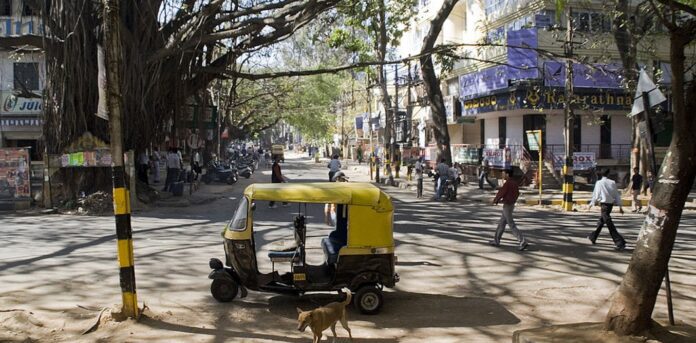We generally tend to mediate that nature and cities are polar opposites. But right here is not solely right. As my research on Bangalore or Bengaluru – India’s IT hub – shows, for a whole lot of years, the inhabitants of this map grew because of nature, not regardless of it.
In my e guide Nature within the Metropolis: Bengaluru within the Previous, Modern and Future, I seize a deep dive into the ecological historical previous of an Indian metropolis, going close to support beforehand to the Sixth century CE.
Inscriptions on stone and copper plates present that the beginning up level for a model recent village modified into usually the creation of a tank, or lake, to amass rain water – wanted and existence-giving on this detrimental low-rainfall ambiance.
These inscriptions current attention-grabbing insights into the cease relationship that these early residents had with nature. They characterize the panorama as consisting of the lakes, the surrounding irrigated and dry land, the “wells above”, and the “timber below”. This three-d survey of the panorama, consisting of two needed sources, water (lake) and meals (agriculture), nourished by nature below (within the type of wells) and above (within the type of timber) is a remarkably holistic concept of nature.
Sadly, in on the current time’s urbanised India, we relish obtained misplaced all trace of this three-d imaginative and prescient.
Declining sources of water
The central areas of Bangalore had 1960 inaugurate wells in 1885; on the current time, there are fewer than 50. Bangalore additionally misplaced a great deal of its lakes, which had been thought of to be filthy breeding grounds for malaria, and reworked to bus stands, malls, housing, and diverse constructed areas.
Sree Kanteerava stadium modified into in-constructed 1997, the arrange Sampangi lake feeble to be situated earlier than.
Shakkeerpadathakayil/Wikimedia, CC BY-SA
The metropolis’s central Sampangi lake, which geared up water to many substances of Bangalore within the nineteenth century, modified into reworked right right into a sports activities actions stadium by the 20 th century, forsaking easiest a small pond for ceremonial non secular capabilities. So long as lakes and wells geared up water, wanted for the actions of day-to-day existence, they had been worshipped as sacred and rep as existence-giving.
Furneaux, JH (1895) Glimpses of India. A large photographic historical previous of the Land of Antiquity, the large Empire of the East. Historic Publishing Firm. Philadelphia.
Furneaux, Wikmedia
Rituals celebrating the overflowing of lakes for the size of the monsoon by paying homage to the lake goddess saved the importance of lakes within the forefront of usa citizens’s imaginations. However as soon as piped water started to be geared up within the Nineties, these water our our bodies started to decay. By the top of the nineteenth century, wells and lakes started to be polluted with rubbish, sewage, and even corpses for the size of circumstances of epidemics and sickness.
Voters nurturing nature
What reworked this centuries-long, stable relationship between people and nature? When Bangalore shattered its native loop of dependence by importing water from inaugurate air, people forgot the importance of their native sources of water.
But, as our research has proven, Bangalore restful needs water merely as badly for its resilience. The metropolis has grown so broad that piped water from far-off rivers can not current all its needs.
Thus resurgent citizen actions throughout Bangalore relish begun to focus on holding and restoring lakes of their neighbourhoods, which is in a attribute to additionally recharge the water below flooring. In some low earnings settlements, the arrange ample water current is a persevering with house, neighborhood wells, as soon as ignored, are actually being assiduously rep and maintained as nicely.
The similar sample – of an early, cease relationship with nature, adopted by a destroy, and later a resurgent curiosity within the connection – can be having enjoyable with out within the case of timber. Early residents did not easiest focus on water, nonetheless additionally “greened” this dusty, scorching panorama of the dry Deccan plateau. Successive rulers from the sixteenth century onwards, and common residents planted hundreds and hundreds of timber over centuries.
The numerous of lakes in Bangalore elevated between 1791 and 1888 then fast diminished after piped water modified into launched in.
Sreerupa Sen, CC BY-NC-ND
Each settlement modified into greened with a gundathope – a woodlot usually planted with fruiting timber, jackfruit, mango and tamarind – which geared up coloration, fruits, firewood for cooking, grazing enviornment matter for cattle, and every now and then timber as nicely.
When one tree modified into chopped down, however some other modified into planted to verify continuity. New areas of the metropolis had been assiduously greened by directors, who planted timber, and residents, who watered and cared for them, taking advantage of the merchandise and suppliers they geared up. This apply of greening endured for the size of the British colonial interval of governance, and later into the 20 th century, after Indian independence. Attributable to the frigid local weather of Bangalore – in fragment attributable to its area on a plateau, nonetheless additionally because of its lakes and timber, created, planted and nurtured by native residents and rulers over centuries – the metropolis modified into a selected area for the British military, and later as a science and industrial hub in south India.
It’s no accident that Bangalore, as soon as often called India’s lake metropolis and backyard metropolis, modified into the nation’s IT capital.
Hovering temperatures and rising air air pollution
By the leisurely twentieth century, this relationship had begun to fray. With fast development, roads and diverse constructed infrastructure gained significance within the minds of planners. As a , timber had been pushed apart, and felled of their hundreds for sample initiatives in Bangalore.
Inevitably, with additional personal autos on the boulevard, and fewer timber, the metropolis modified into hotter, and the air severely polluted. Voters quickly realised this connection. So did lecturers. Our research as an illustration demonstrated that timber frigid the air by 3 to fiveºC, and decrease the temperature of the boulevard floor by as highly effective as 23ºC, in addition to very a lot decreasing air air pollution.
Social media to the rescue
But citizen actions did not proceed. Throughout the early twenty first century, the nonagerian Honnamma Govindayya has turn into an epitome of struggles to defend Bangalore’s ambiance.
Honamma Govindayya.
Harini Nagendra, CC BY-NC-ND
She fought in opposition to actual property builders who desired to develop right into a neighborhood park that her youngsters carried out in, taking a case your whole cease to the Supreme Courtroom of India. She gained and saved a small nonetheless wanted patch of inexperienced from destruction.
Mass citizen protests in current years relish endured and gained needed victories for the metropolis’s inexperienced masks, together with the reversal of a controversial dedication to assemble a metal flyover, which might perhaps relish destroyed hundreds of timber.
Proper this second time these actions are strongly supported by social media. Throughout the flyover case, the twitter designate #steelflyoverbeda (“beda” which means “no” within the native language, Kannada) went viral, attracting a whole bunch of followers.
Social media has geared up a additional trustworthy right close to for as soon as isolated teams of usa citizens to attach and coordinate, and typically to ratchet up public pressure on nature-blind directors. Who is aware of what number of would relish supported Honamma Govindayya if she had a Twitter account then?
Perception the traditional previous of nature reveals a the reality is assorted picture from the preconceived concept that, at the least in worldwide areas cherish India, the arrange the pressures of sample and development are so broad, nature and cities can not coexist.
Proper this second time, this attitude on the ecological historical previous of Bangalore can succor metropolis-dwellers worldwide understand why nature within the metropolis is not solely essential for the metropolis’s previous, nonetheless additionally wanted for its resilient future.
A historical previous of resilience, Harini Nagendra.

